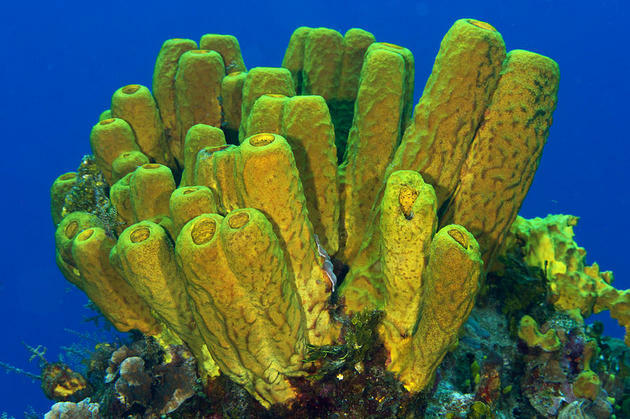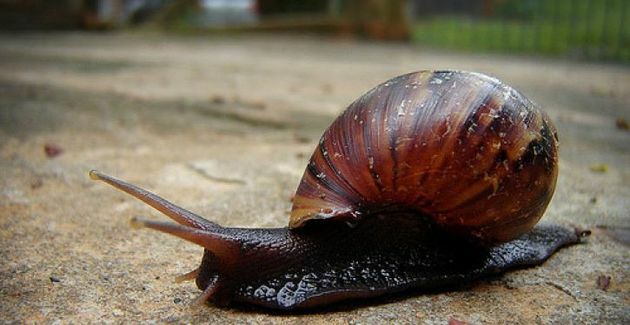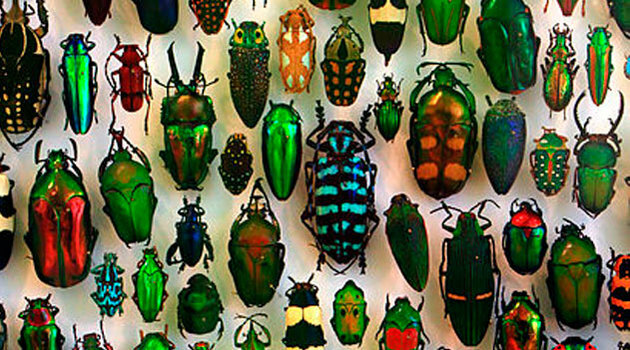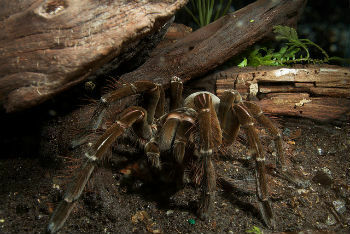O Animal Kingdom, Animalia or Metazoa it is composed of heterotrophic organisms, that is, those that do not produce their own food.
This is one of the main characteristics of the group and what differentiates them from other living beings, such as vegetables.
The beings that belong to the animal kingdom are eukaryotes and multicellular. They have the ability to move and most of them perform sexually.
Animals are classified into several phyla, many of them being invertebrate animals (those that do not have vertebrae).
Vertebrate animals that have a skull, vertebrae and dorsal column belong to the Phylum of Chordates.
Embryonic development determines important characteristics for its classification, all animals have the blastula stage in their development.
Animal Kingdom Characteristics
- eukaryotes: cells with differentiated nucleus, that is, surrounded by membrane;
- Heterotrophs by ingestion: they need to ingest other living beings, as they do not produce their own food;
- Multicellular: body formed by many cells with specific functions;
- Aerobics: breathe the oxygen they take from the air or water, depending on the environment in which they live;
- The reproduction is sexual, that is, it involves the union of gametes. But some invertebrates do so asexual.
- They do not have cellulose and chlorophyll (achlorophylls), a characteristic that differentiates them from vegetables;
- They have tissues and organs, with the exception of the simplest phyla such as Porifers;
- Presence of the blastula: cell sphere, hollow, with liquid inside. It is the second stage of cell segmentation in embryonic development after zygote formation (morula-blastula-gastrula-neurula).
- presence of Celoma, an embryonic cavity present in all vertebrates, with the plathelminths being pseudocoelomated and the porifers lacking;
- Most animals have bilateral symmetry: two symmetrical body halves. Radial symmetry can also happen (several longitudinal planes from the center of the body, for example: echinoderms) or even lack of symmetry (sponges).
Philosophy of the Animal Kingdom
The animal kingdom is divided into several phyla. The main ones are: porifers, cnidarians, flatworms, nematodes or roundworms, annelids, echinoderms, molluscs, arthropods and chordates.
Vertebrate animals
You vertebrate animals belong to the Phylum of Strings (Chordata). The main feature of the group is the presence of the spinal cord and vertebral column.
Chordate animals are divided into 5 classes: fish, amphibians, reptiles, birds and mammals.
Fish

You fish are animals with the body covered by scales and gill breathing (take oxygen from the water). They do not control body temperature (pecilotherms). Examples of fish are: the dorado, the stingray and the shark.
amphibians

You amphibians are animals that depend on water in the larval stage (gill respiration) and undergo a metamorphosis body in adult life and acquire lung respiration, such as toads, frogs, tree frogs and salamanders. They are still pecilothermic animals.
reptiles

You reptiles are animals that have lung breathing and body covered with scales or carapace. They can live in water or on land and are petilothermic. Examples are turtles, alligators and lizards.
birds

At birds they are animals with their bodies covered with feathers and that have lung breathing, control their body temperature (homeotherms). Examples of birds are: chicken, ostrich, rhea, penguin, parrot and hummingbird.
Mammals

You mammals they have hairs, are homeothermic and have lung respiration. One of the main characteristics of the group is the fact that females feed their young through the mammary glands.
Examples of mammalian animals are humans, cats, dogs and bats.
Invertebrate Animals
You invertebrate animals are represented by numerous phyla with very different characteristics, but all are multicellular and do not have cell wall.
There are eight phyla of invertebrate animals, they are: porifers, cnidarians, flatworms, roundworms, molluscs, annelids, echinoderms and arthropods.
porifers
You poriferous they are primitive freshwater or saltwater animals. They are organisms that do not have organs, nor the ability to move, and reproduction can be sexual or asexual. Examples: sponges.

Cnidarians

You cnidarians they live in fresh or salt water and some of them are capable of locomotion while others are sessile.
A feature that makes them unique is the presence of a specific cell type, cnidocytes. Some examples of cnidarians are jellyfish, corals, sea anemones, hydras and caravels.
platyhelminths

You flatworms they have a flat body and can be free-living or parasites. Examples are tapeworms, solitaires, schistosomes and planarians.
roundworms

the nematodes or roundworms they have a cylindrical body and can be free-living or parasites of humans and plants. Examples are roundworms, worms and other worms.
annelids

You annelids have a segmented body, composed of rings. They live in moist habitats on land and in fresh or salt water. Examples are: earthworms, polychaetes and leeches.
echinoderms

You echinoderms they are marine animals with the presence of a calcareous exoskeleton and a hydrovascular system. Their bodies have pentarradial symmetry, that is, with 5 equal sides. Examples are: sea cucumbers, starfish and sea urchins.
molluscs

You molluscs they are soft-bodied animals with the presence of a shell, which can be internal (squid and octopus) or external (snails, mussels). They inhabit freshwater or saltwater and wetland environments.
Examples of molluscs are mussels, octopus, squid, slugs, oysters and snails.
arthropods

You arthropods they comprise a very diverse phylum. They are characterized by a segmented body and the presence of a chitin exoskeleton.
The main arthropods are:
- Insects: butterflies, bees, cockroaches, flies;
- Arachnids: spiders, mites, scorpions, ticks;
- Myriapods: centipede, centipedes, gongolos;
- Crustaceans: lobsters, crabs, crabs, shrimps.
Also know about the other Realms of Living Beings:
- Kingdom Monera
- Protist Kingdom
- Kingdom Fungi
- plant kingdom



